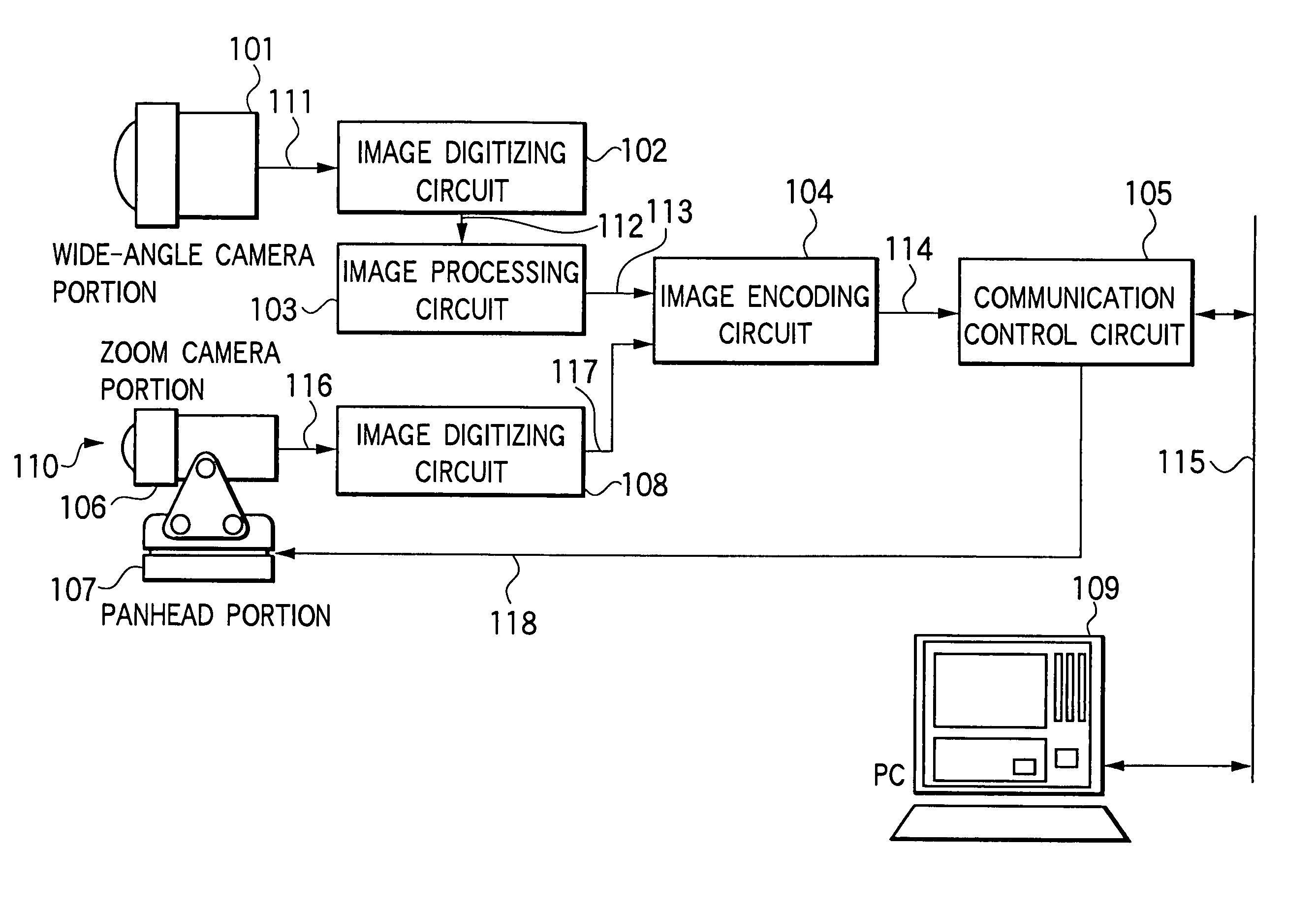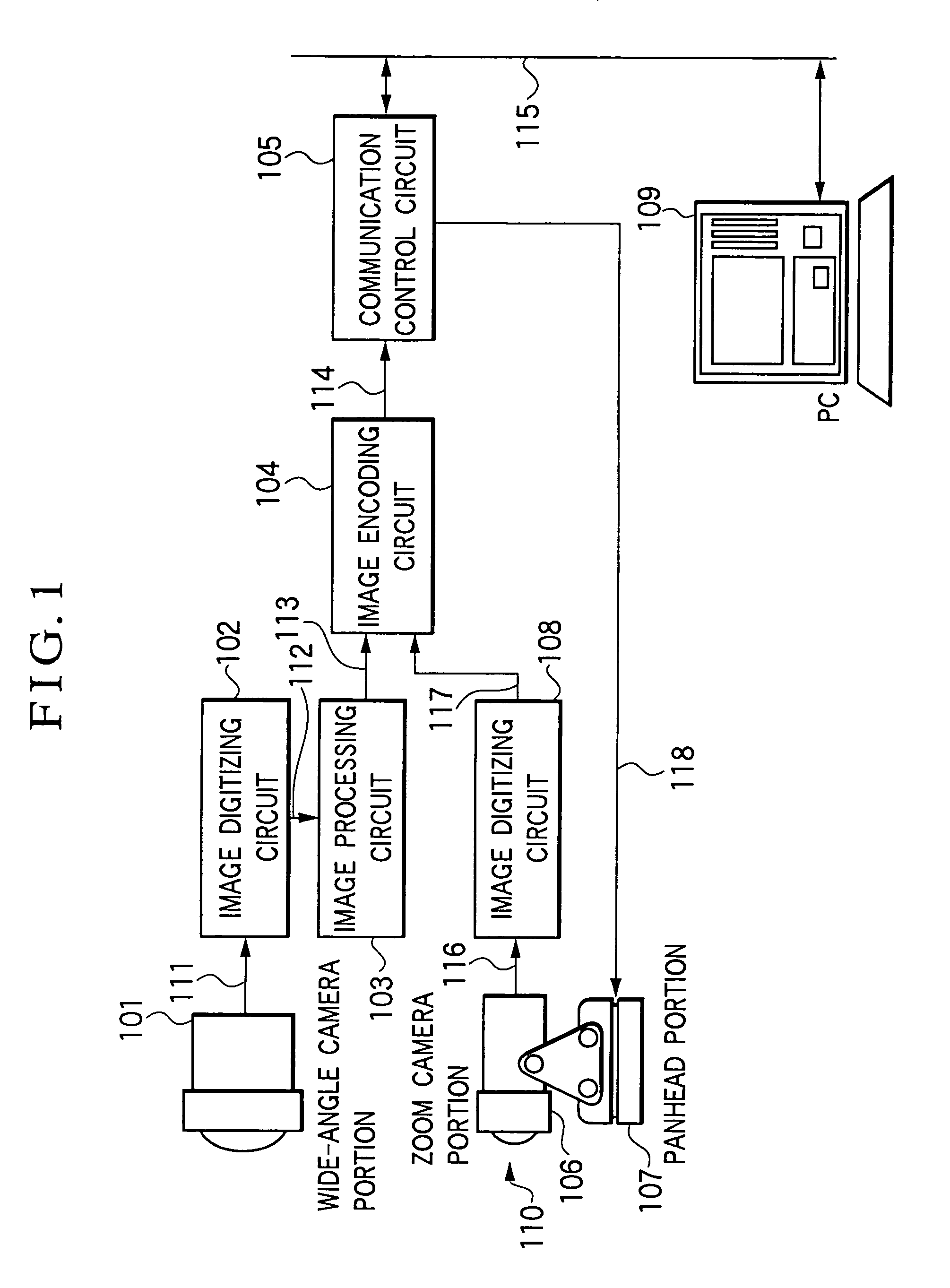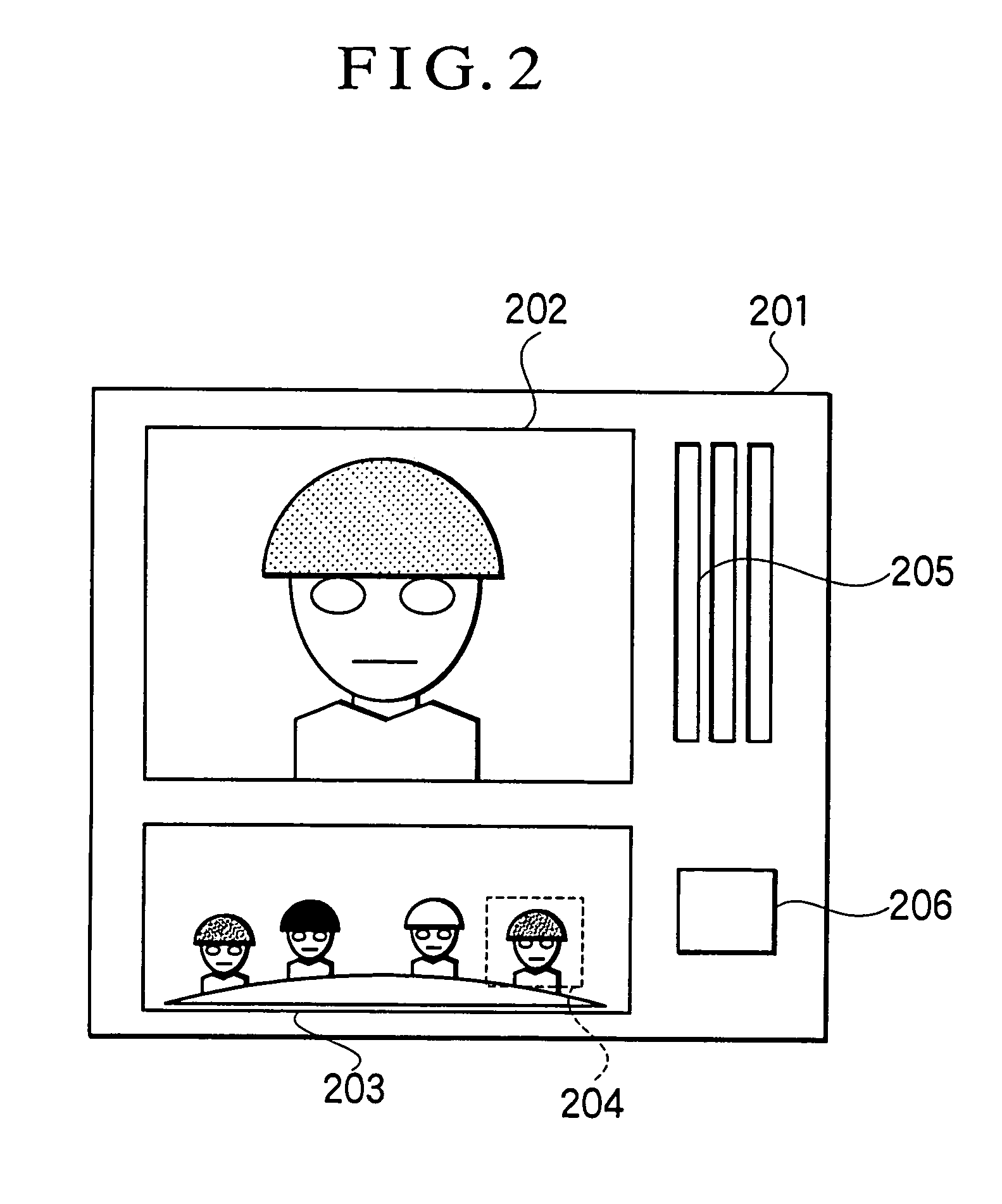Camera control system
a control system and camera technology, applied in the field of cameras, can solve the problems of insufficient dealing, inability to view the situation around the subject, and inability to view the situation further, and achieve the effect of giving an instruction quickly and momentarily
- Summary
- Abstract
- Description
- Claims
- Application Information
AI Technical Summary
Benefits of technology
Problems solved by technology
Method used
Image
Examples
first embodiment
[0041]FIG. 1 is a block diagram showing a camera control system according to a In FIG. 1, reference numeral 101 represents a wide-angle camera portion which can pick up an image at a wide angle of view (field), reference numeral 102 designates an image digitizing circuit for digitizing a video image taken by the wide-angle camera portion 101, reference numeral 103 depicts an image processing circuit for processing the video image digitized, and reference numeral 104 denotes an image encoding circuit for encoding a video image.
[0042]Further, reference numeral 105 signifies a communication control circuit composed a CPU, a memory, a network adapter and others, reference numeral 106 means a zoom camera portion of a camera110 equipped with a panhead, reference numeral 107 indicates a panhead portion of the panhead-mounted camera 110, reference numeral 108 shows an image digitizing circuit for digitizing a video image taken by the panhead-mounted camera 110, and reference numeral 109 re...
second embodiment
[0097]In the second embodiment, two wide-angle camera portions 101 and 601 are fixed in a state of making an angle of 180° therebetween, as shown in FIG. 7. In FIG. 7, reference numerals 71 and 72 designate wide-angle camera portions, respectively, and reference numeral 73 denotes a panhead-mounted camera. The panhead-mounted camera 73 may be constructed to de detachable from the main body.
[0098]Returning again to FIG. 6, a video signal 611 picked up by the wide-angle camera portion 601 is converted into a digital video signal 612 by an image digitizing circuit 602 and is then given to an image processing circuit 603. The image processing circuit 603 image-processes the digital video signal 112 from the image digitizing circuit 102 and the digital video signal 612 from the image digitizing circuit 602 into panoramic images having no distortion, and further combines the panoramic images with each other into one panoramic image and outputs the obtained panoramic image. Incidentally, c...
third embodiment
[0102]FIG. 8 illustratively shows a coaxial camera serving as an optical system of a first apparatus, which is a component of a camera control system according to the invention. In FIG. 8, reference numeral 301 represents a front stage portion which is a lens group serving as a part of each of a wide-angle (fisheye) lens and a telephoto lens, reference numeral 302 designates a first rear stage portion which is a lens group serving as a remaining part of the wide-angle lens, reference numeral 304 depicts a second rear stage portion which is a lens group serving as a remaining part of the telephoto lens, and reference numeral 303 denotes a half mirror disposed at a boundary position between the front stage portion 301 and each of the first rear stage portion 302 and the second rear stage portion 304. Thus, the wide-angle lens (fisheye lens), which has a distortion aberration and permits photography at a wide angle of view, is made up of the front stage portion 301 and the first rear s...
PUM
 Login to View More
Login to View More Abstract
Description
Claims
Application Information
 Login to View More
Login to View More - R&D
- Intellectual Property
- Life Sciences
- Materials
- Tech Scout
- Unparalleled Data Quality
- Higher Quality Content
- 60% Fewer Hallucinations
Browse by: Latest US Patents, China's latest patents, Technical Efficacy Thesaurus, Application Domain, Technology Topic, Popular Technical Reports.
© 2025 PatSnap. All rights reserved.Legal|Privacy policy|Modern Slavery Act Transparency Statement|Sitemap|About US| Contact US: help@patsnap.com



